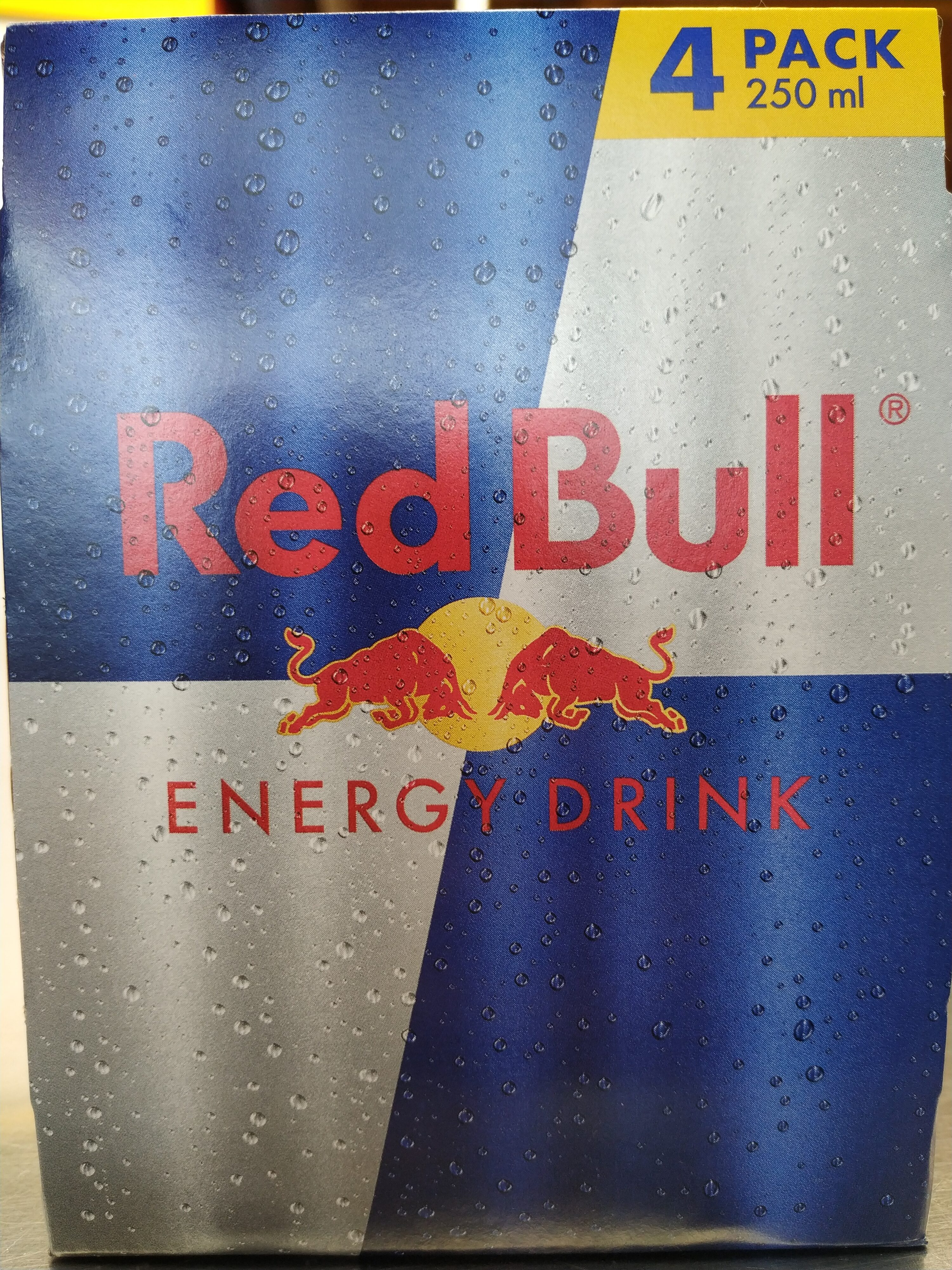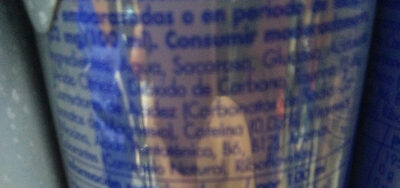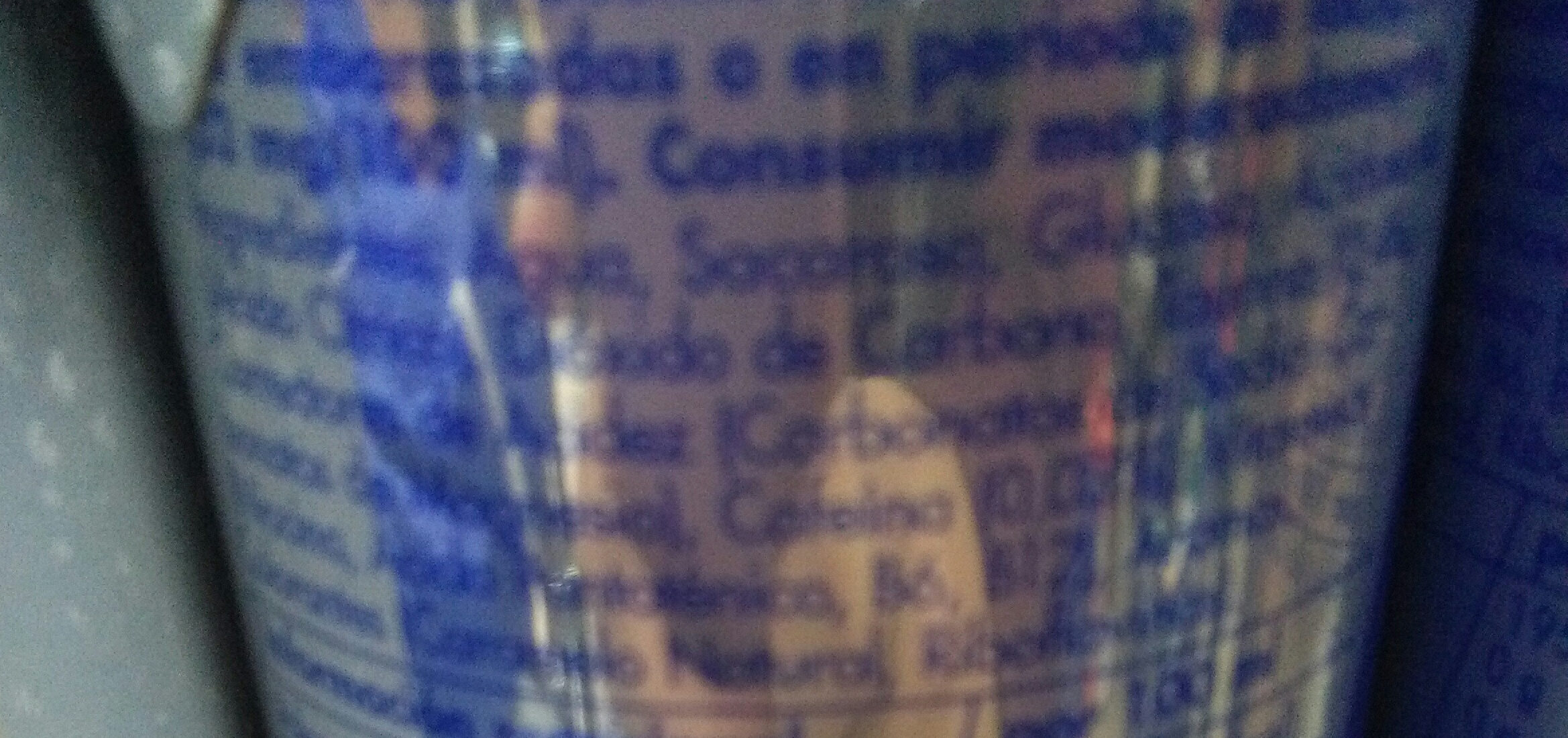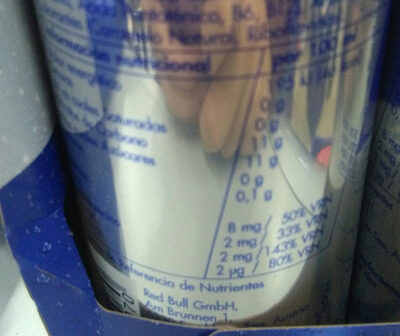Red Bull - 4 x 250 ml
This product page is not complete. You can help to complete it by editing it and adding more data from the photos we have, or by taking more photos using the app for Android or iPhone/iPad. Thank you!
×
Barcode: 9002490100490 (EAN / EAN-13)
Common name: energy drink.
Quantity: 4 x 250 ml
Packaging: Metal, Recyclable Metals, Aluminium, Can, Drink can
Brands: Red Bull
Categories: Beverages, Carbonated drinks, Non-alcoholic beverages, Energy drinks, Flavoured Drinks, Sweetened beverages
Labels, certifications, awards:
Not advised for specific people, Pasteurized, Green Dot, Not advised for children and pregnant women
Origin of ingredients: Austria
Manufacturing or processing places: Austria
Link to the product page on the official site of the producer: https://www.redbull.com/gb-en/energydrin...
Stores: Delhaize, carrefour.fr, Mercadona, Flow
Matching with your preferences
Environment
Packaging
Transportation
Report a problem
Data sources
Product added on by openfoodfacts-contributors
Last edit of product page on by redspider.
Product page also edited by 5m4u9, alia, countrybot, date-limite-app, driveoff, foodless, halal-app-chakib, inf, musarana, smoothie-app, swipe-studio.










